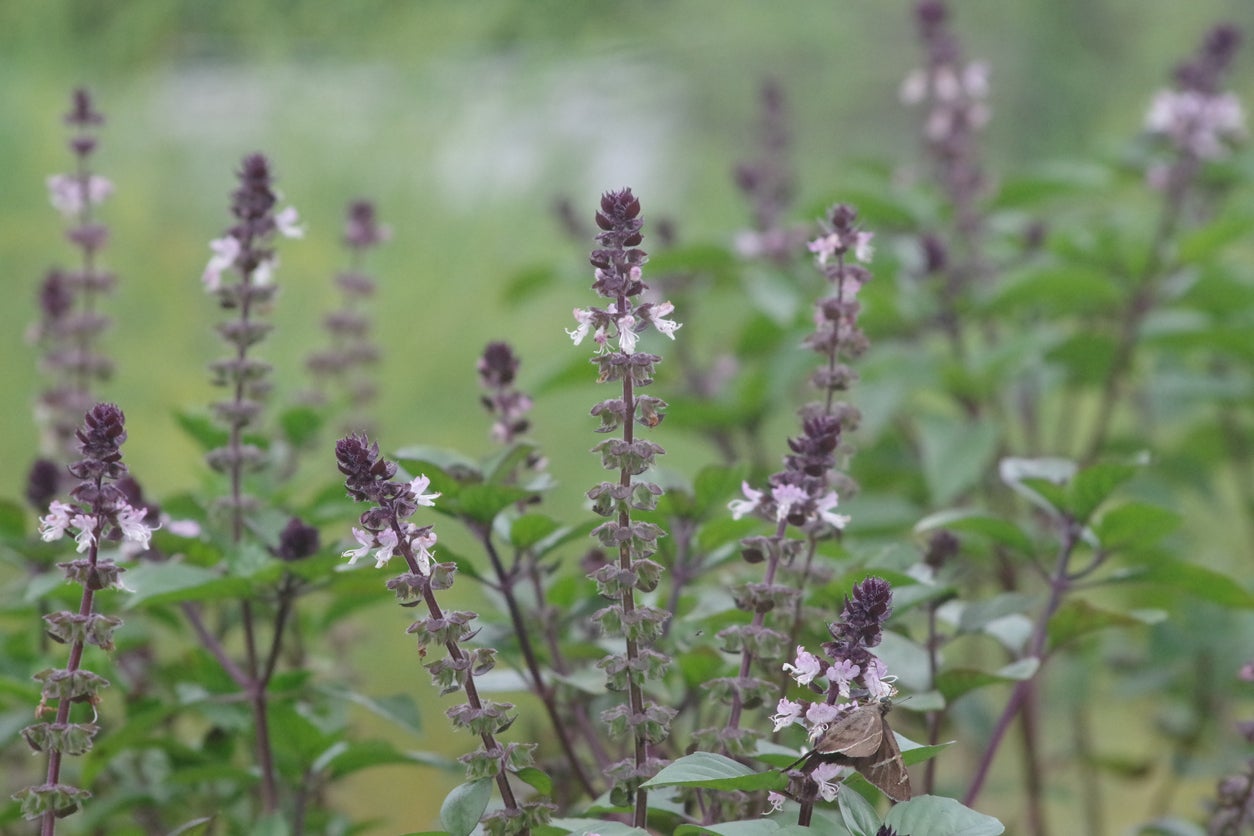What Is Blue Spice Basil: Growing Blue Spice Basil Plants

There’s nothing like the flavor of sweet basil, and while the bright green leaves have a charm of their own, the plant is certainly not an ornamental specimen. But all that has changed with the introduction of ‘Blue Spice’ basil plants. What is blue spice basil? Basil ‘Blue Spice’ is an ornamental basil plant that is sure to wow devotees of this herb. Read on for more Blue Spice basil info.
About Basil ‘Blue Spice’
Blue Spice basil plants have small, brilliantly green leaves. When the plants bloom, they produce dense spikes of dark purple bracts with light purple flowers reminiscent of salvia. As the plant matures, the stems darken to maroon and new leaves emerge blushed with purple.
The flavor has the quintessential licorice flavor of sweet basil but with notes of vanilla, spice, and lemon. Its unique flavor profile lends itself well to tomato, eggplant, and zucchini dishes as well as meat, fish, and cheese dishes.
Blue Spice basil blooms earlier than most other sweet basils, from June to the first fall frosts. The growth habit is compact and uniform, and plants attain a size of about 18 inches (45.5 cm.) tall by 12 inches (30.5 cm.) wide.
This annual prefers full sun exposure, but will tolerate dappled shade. The more sun the plant gets, the deeper the purple hues. Like other types of basil, ‘Blue Spice’ mixes well in the garden and looks particularly stunning when combined with the classic herb garden combo of orange marigolds.
Growing Blue Spice Basil
Blue Spice basil, like other basil varieties, is a tender herb. It can be grown in USDA zones 3-10. It can be grown as an annual outdoors or as a perennial inside on a sunny windowsill.
Basil likes fertile soil that has been well tilled. Amend the soil with well-rotted organic compost or manure a month prior to sowing. Keep the area weed free and moist.
Sign up for the Gardening Know How newsletter today and receive a free copy of our e-book "How to Grow Delicious Tomatoes".
Sow seeds inside for transplanting outdoors in late February. If you wish to direct sow, wait until late March when there is no chance of frost and soil temperatures have warmed. Sow seeds thinly and cover lightly with soil.
Germination should occur in a week to two weeks. Once the seedlings develop their first two sets of true leaves, thin the plants out, leaving only the strongest seedlings.
Once established, basil requires very little care. Keep the plants lightly watered, the area weed free, and pinch off any blooms.

Amy Grant has been gardening for 30 years and writing for 15. A professional chef and caterer, Amy's area of expertise is culinary gardening.
